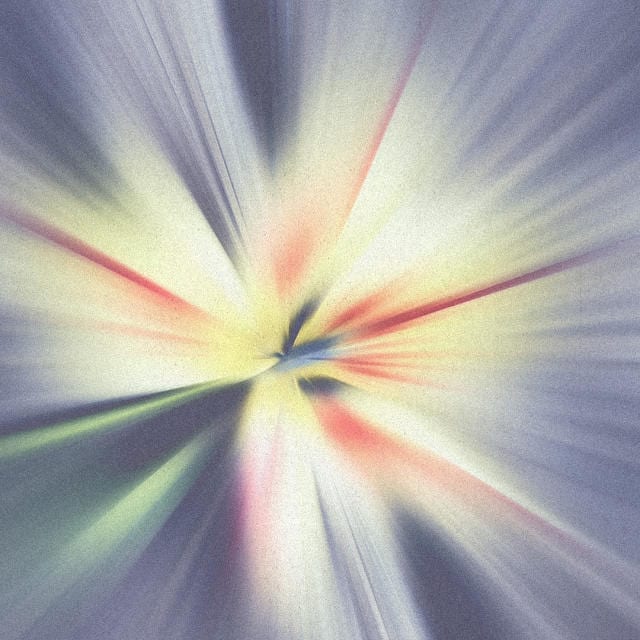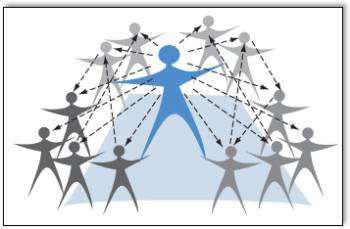
You know it when it happens: All of a sudden, everyone on the Internet is talking about the same thing. What does it mean for the future of information?
Last month, over a billion people around the world suddenly knew the name and appearance of the very same woman, and simultaneously began exchanging opinions about her. And while the unveiling of Caitlyn Jenner is not news in the traditional sense, and there was no shortage of major events erupting around the globe at the same time, the Internet largely converged for several hours around discussions of who Caitlyn was, and what she stood for.
This is actually just the latest instance of what I’ve come to describe as a “micro-singularity,” which, broadly defined, happens when the world’s social Internet channels momentarily focus their awareness around a single phenomena, while it’s still happening—Émile Durkheim’s conscience collective digitally transformed into a literal entity. Recent micro-singularities include The Charlie Hebdo massacre, the llama chase, the blue versus gold dress debate, and the Boston bombing with its subsequent manhunt. Japan’s Fukushima Disaster, the Haiti Earthquake, and Michael Jackson’s death are milestones in the development of the micro-singularity.
Though we might consider the American Revolution’s “shot heard round the world” one of history’s first micro-singularities, digital technology has increased our ability to spread news. But even though they can literally impact the lives of billions in the space of several hours, our official institutions have been slow to understand what they are, how they work, or just as key, how we should deal with them.
UNDERSTANDING MICRO-SINGULARITIES
At their essence, micro-singularities typically bear these traits:
They’re Powered Through—and Evolving Within—Social Media
Thanks to its streamlined UI and the pervasiveness of mobile phones (most people around the world primarily engage the Internet via smartphones), micro-singularities tend to first launch on Twitter, then fan out to the other major social networks. As awareness of the triggering event reaches saturation levels, the micro-singularity generates aftershocks in the form of one or more collective responses, often via meme. So for instance, very soon after the Internet became aware of the horrific Charlie Hebdo shooting, it had also evolved a direct response that spread just as quickly: Je Suis Charlie.
They’re Organic, Subjective, and Rarely Initiated by Traditional Organizations
Micro-singularities will occasionally emerge around official, planned events such as the State of the Union or the Oscars; more typically, however, they emerge from the grassroots, powered by what most interests or concerns an aggregate of social media users. For this reason, celebrity related events are just as likely (if not more so) to trigger a micro-singularity, than a “hard news” event. (And even people disinterested in a particular celebrity will find themselves impelled to publicly express an opinion, even if it’s just annoyance.) Cataclysmic weather events, such as tsunamis and earthquakes, are just as likely to cause a micro-singularity, as everyone within the affected region and everyone connected with them can launch a cascade of awareness that rapidly encompasses the world. And as we saw with Justine Sacco’s unfortunate Tweet before flying to Africa, a single individual can trigger a micro-singularity.
They Shape The Reaction of Offline Media and Institutions
Read more: Welcome To The Age Of The Micro-Singularity
The Latest on: Mhe future of information
[google_news title=”” keyword=”The future of information” num_posts=”10″ blurb_length=”0″ show_thumb=”left”]
via Google News
The Latest on: The future of information
- Remembrance of things past: Nostalgia for 1964 World's Fair lives on in the Information Ageon April 27, 2024 at 6:00 am
For Long Islanders of a certain age, the 1964-65 World’s Fair is a fond memory, a place in Queens where personal dreams were inspired by a vision of tomorrow.
- Xi shakes up China’s military in rethink of how to ‘fight and win’ future warson April 26, 2024 at 11:32 pm
China has rolled out the largest restructuring of its military in almost a decade with a focus on technology-driven strategic forces crucial for winning future wars, as Beijing vies with Washington ...
- The Future of Money: How Cryptocurrency is Transforming the Financial Industryon April 26, 2024 at 11:27 am
Welcome to the future of money, where digital currencies are revolutionizing the financial industry as we know it. With cryptocurrency gaining traction around the world, traditional forms of currency ...
- The future of value-based care in orthopedicson April 26, 2024 at 10:00 am
Discover the future of value-based care in orthopedics from surgeons. Learn about the challenges and opportunities in this evolving landscape.
- 3 Things Leaders Can Learn From CIOs About The Future Of Techon April 26, 2024 at 4:45 am
Technology leaders are walking a tightrope between enormous possibilities and severe risks accumulating on multiple fronts simultaneously.
- The future of client engagement: bridging the digital divideon April 24, 2024 at 3:14 am
Matt Ryan, explores how to bridge the divide between physical and digital office spaces and explains how companies can create online and offline experiences that genuinely drive engagement – and why t ...
- Discover the Future of Finance With Obrcrypto Latest Advancementson April 22, 2024 at 8:50 am
With a focus on innovation and accessibility, Obrcrypto continues to pave the way for individuals and businesses alike to navigate the evolving ...
- The Future of Blockchain: Exploring Generative AI’s Impact on Cryptocurrencyon April 19, 2024 at 3:04 am
As technology continues to evolve at a rapid pace, the intersection of blockchain and generative AI is poised to revolutionize the world of cryptocurrency. In this blog post, we will delve into how ...
- Skyrmions move at record speeds: A step towards the computing of the futureon April 18, 2024 at 11:00 am
An international research team led by scientists from the CNRS has discovered that the magnetic nanobubbles known as skyrmions can be moved by electrical currents, attaining record speeds up to 900 ...
- What's the Future of Fact-Checking in Journalism and Media?on April 16, 2024 at 3:25 pm
The future of fact-checking in digital journalism remains as it always has been: get it right. What's to evolve? Print or digital, readers expect news organizations to provide them with the truth. An ...
via Bing News










